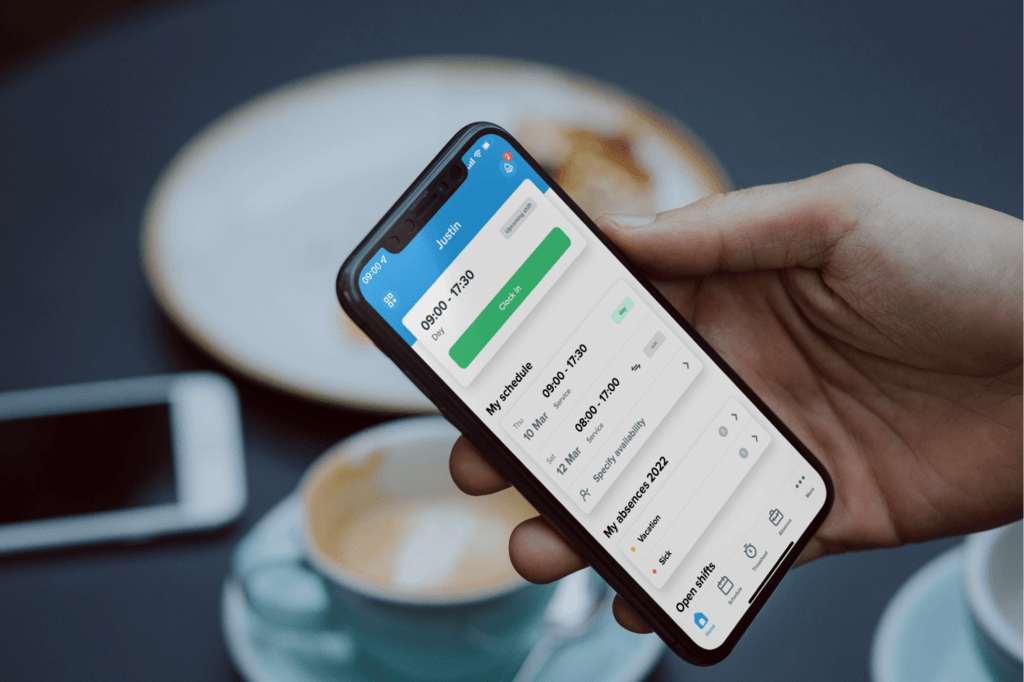Making a restaurant schedule is like preparing a perfect Beef Wellington; it's got to be just right. We're not just serving food here; we're also serving up a work vibe that keeps everyone happy and efficient. So, today we're diving into some game-changing tips that make restaurant scheduling a breeze.
We're talking about making your life easier while keeping your team stoked to clock in. From figuring out who works best when, to dodging those annoying scheduling mix-ups, we've got you covered. So, let's get into it and level up your scheduling game. Trust us, your restaurant and your crew will thank you.
1. Understand your staff's availability and preferences
When it comes to successful restaurant scheduling, one can't emphasise enough the importance of knowing your team's availability and preferences. Remember, your staff are human beings with lives outside the kitchen or front-of-house.
Preferred hours and days
The first step is understanding their preferred work hours. Are they morning birds or night owls? Get their preferred hours right, and they're more likely to perform at their best.
Days off and special requests
Your employees will have special requests on occasion. Need to attend a family wedding or college classes? These are commitments that a thoughtful manager should factor into the scheduling process.
Two-way communication
Don't just make it a one-way street. Encourage your team members to be upfront about their needs and be approachable. This builds trust and leads to a more engaged workforce.
Tailoring schedules to individual needs and preferences shows you care, and that's good for everyone—most importantly, your restaurant's bottom line.
2. Establish clear communication channels
In the restaurant business, effective communication is vital. Miscommunications can cause everything from customer upsets to staff frustration. That's why having clear channels for everyone to interact is a non-negotiable.
Tech-savvy solutions
Think about using technology to your advantage. Whether it's a dedicated Slack channel, WhatsApp group, or specialised restaurant management software, the goal is swift and accurate information exchange. These platforms can send out automated alerts for shift changes or urgent updates, ensuring that everyone's in the loop instantly.
Multiple channels
Consider using multiple communication channels. For instance, a group chat for casual updates, and email for more formal notifications. A layered approach ensures that nothing slips through the cracks.
Open door policy
An open-door policy, where staff can approach management with their concerns and suggestions, complements your digital channels perfectly. It adds a layer of personal interaction that technology can't replace.
Be transparent about why certain decisions, like schedule changes, are made. When staff understand the reasoning behind these choices, they're more likely to be cooperative and proactive.
3. Utilise scheduling software

In today's digital age, scheduling software is akin to having a Swiss Army knife in your managerial toolkit. No more drowning in paperwork or juggling endless back-and-forths. These software platforms have much to offer.
Feature-rich platform
The best scheduling software doesn't just create rosters. It allows you to edit shifts with a simple drag-and-drop interface, offers a mobile app for employees to check schedules on the go, and integrates with other software you might use, like your Point of Sale system. It also allows your team to get their work schedule on their smartphones and request changes instantaneously.
Beyond the schedule
You're not just distributing schedules; you're gathering data. Think labour costs, peak business hours, and even individual employee performance metrics. All of this data serves as a valuable lens into your operation, helping you make informed decisions.
Error minimisation
Automating the scheduling process is more than just a time-saver. It significantly reduces the risk of human errors (like double booking or understaffing) which can be costly both in terms of morale and your bottom line.
Useful Read: Managing Double Shift: Everything You Need to Know
4. Plan for peak times and seasonal fluctuations
In the restaurant industry, peaks and valleys are the norms, not the exceptions. Holidays, special events, and seasonal changes can all significantly impact customer traffic. A smart manager plans ahead for these scenarios. If you're merely reacting to these fluctuations, you're already behind the curve.
Strategies for adequate staffing
There are many ways to ensure you're adequately staffed during these peak times. Consider hiring temporary staff, or offering overtime opportunities to your current team.
Fine-tuning shifts
Sometimes, it's not about adding more staff but optimising the ones you already have. Adjusting shifts to align with demand (such as having more staff during dinner rushes and fewer during lulls) can be just as effective.
Communication is key
Whatever strategy you choose, communication is so important. Use your established channels to keep everyone informed. This ensures a seamless transition when you're scaling your team up or down.
5. Cross-train your staff
Cross-training is a strategy with tangible benefits. When employees are trained in multiple roles, you've got a versatile team that brings a whole new level of scheduling flexibility to the table. Whether it's an unexpected absence or a last-minute rush, a cross-trained staff can adapt on the fly.
Diverse skill set
Having a team that can juggle multiple roles (like a server who can also bartend or a cook who can manage the front desk) means you can plug any gaps in your schedule without skipping a beat.
Increase staff engagement
What's more, cross-training can be engaging and motivating for your staff. It breaks the monotony, challenges them to learn new skills, and offers a sense of accomplishment. It's a win-win: employees feel more valued, and you get a more resilient team.
Risk mitigation
Cross-training is also a form of risk mitigation. Say a key team member calls in sick; with a cross-trained staff, you won't be left scrambling. You can easily adjust shifts to maintain those critical service levels.
6. Implement a fair and transparent time-off policy
Creating a fair and transparent time-off policy is essential for avoiding headaches later. A well-crafted policy can pre-empt scheduling conflicts and create an atmosphere of fairness that benefits everyone on your team.
The framework
Your policy should clearly outline how to request time off, how much notice is required, and if there are any caps on simultaneous time off among employees. Make sure this information is easily accessible, perhaps even integrated within your scheduling software.
Set expectations
Transparency is key here. Everyone should know the rules of the game. Make it crystal clear how decisions are made; whether it's on a first-come-first-served basis, or some other method.
Promote equity
The goal is to give all staff members, whether part-time or full-time, equal opportunities to take the time they need. Whether it's for a family emergency, a holiday, or personal days, an equitable policy ensures that everyone feels valued and taken care of. In the event that too many employees request the same time off, like the holidays, your policy should include a conflict resolution mechanism. Maybe it's based on seniority, or perhaps a rotation system; whatever it is, make sure it's fair and understood by all.
7. Monitor labour costs and productivity
Managing a restaurant is about keeping a tight rein on labour costs and productivity. Ignoring these metrics can result in financial pitfalls that are tough to climb out of. Being proactive here is essential.
Use KPIs as your guide
Key performance indicators (KPIs) like labour cost percentage, sales per labour hour, and employee turnover are your navigational stars. These metrics help you understand where you're excelling and where there's room for improvement.
Data-driven decisions
Data is your best new friend. And luckily, scheduling software can provide real-time analytics, enabling you to make quick, data-driven decisions. This ensures that you're not just filling shifts, but doing so in a way that maximises productivity.
Financial health
Monitoring these KPIs closely allows you to adjust your labour needs according to demand. It's a balancing act; you don't want to be understaffed during peak times, but you also don't want to haemorrhage money on labour during slow periods.
Consistently analyse the numbers, and don't be afraid to adjust your approach as needed. This kind of attentive management contributes significantly to the overall health and success of your restaurant.
8. Be flexible and adaptable
The restaurant business is anything but predictable. Flexibility and adaptability are required. You've got to be on your toes, ready to pivot at a moment's notice.
Expect the unexpected
Maybe it's a sudden influx of customers due to a local event, or perhaps it's an unexpected absence in your staff. These challenges can arise without warning, and your ability to adapt quickly is what can set you apart from the competition.
Use tech to your advantage
Utilising scheduling software allows you to make real-time changes efficiently. It offers you the agility you need to adapt to unforeseen challenges swiftly.
Employee Involvement
Being flexible also involves keeping an open channel of communication with your staff. Sometimes, they can offer solutions you hadn't thought of. Involve them in the decision-making process when unexpected scheduling challenges arise.
Another strategy is to have a shortlist of on-call staff or part-timers who can step in at short notice. This creates a buffer that can be invaluable during high-stress situations and ensures that service doesn't suffer.
Useful Read: On-Call Schedules: The Ultimate Guide for Managers
9. Encourage employee feedback
Your employees are the ones most affected by the schedule, so their input is invaluable. Inviting employee feedback on scheduling not only offers you new perspectives but also fosters a sense of ownership among staff.
Two-way communication
Use established channels to solicit feedback. Make it clear that you're not just paying lip service; you genuinely want to hear their thoughts, concerns, and suggestions. Be approachable.
The benefits of inclusion
When employees feel their opinions matter, it translates to increased job satisfaction. They're more committed to their roles, and that commitment manifests in better performance and decreased turnover.
Identify blind spots
Sometimes employees see things that you might miss. Perhaps there's a bottleneck during certain shifts that could be easily solved with a minor schedule tweak. Their frontline experience is a treasure trove of insights that can help improve operations.
But simply collecting feedback isn't enough. You have to act on it, or at least communicate why certain suggestions can't be implemented. Be transparent. It shows your team that their voices are heard and valued.
10. Regularly review and update your scheduling practices

Think of your scheduling practices as a living document—they need to grow and adapt. Regular reviews and updates are necessary for staying ahead of the curve and making sure your practices are effective and aligned with your restaurant's changing needs.
Self-audit and feedback loop
Periodically put your scheduling process under the microscope. Examine its effectiveness, gather employee feedback, and make tweaks as needed. Don't assume that what worked six months ago is still the optimal solution today.
Industry awareness
Staying updated on industry trends and best practices is also vital. Whether it's new labour laws, seasonal factors, or technological advancements, these could all affect how you should be scheduling.
Agile methodology
Adopting an agile approach can make this easier. Make small, incremental changes based on regular reviews, rather than overhauling your entire system at once. This allows for easier adjustments and less disruption to your operations.
This is where scheduling software's analytics are handy to track KPIs that are crucial to your operation. These quantitative insights, combined with feedback from staff, offer a comprehensive view that helps in making informed adjustments.
As you strive to optimise your restaurant's scheduling process, consider Shiftbase, a dynamic employee scheduling software designed to streamline workforce management and improve communication. With Shiftbase, you can create and distribute schedules with ease, track labour costs, and monitor employee performance, all while fostering a collaborative and transparent work environment.
💡 Experience the benefits of Shiftbase first hand by signing up today for a free 14-day trial here.




